Why You Shouldn't Train Defense Drive Before Prey Drive
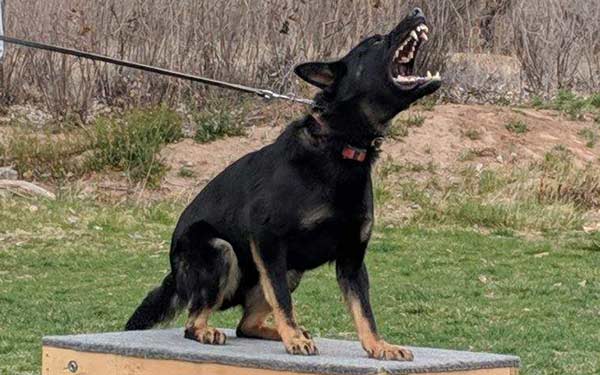
One of the hardest things for new trainers to understand is the sequence of training in bitework. The other day, I saw two comments on a protection dog forum that caught my attention.
One individual stated that he took his young dog out to a club and was told to bring it back when it was more mature so that the training could be started in defense. Then I saw a corroborating statement that a well-known German trainer in this country (Godfrie Dildhie who makes subpar training videos) likes to start the training in defense so that the first session in bite work is a serious confrontation. One of his videos explains how to do this by putting a fence between the helper and dog so the dog does not feel so threatened. This is completely incorrect and foolish!
My immediate reaction was to e-mail this individual and tell him to steer clear of that club. My guess is that the people that train there have very sharp dogs with weak, mouthy, and chewy grips and nerves that have been worn thin.

To make my point, we need to examine the end product that we all want in a protection dog. This is an animal with good temperament, strong nerves, and a solid grip. One that will protect our family but is not dangerous to be around. This picture does not come from starting your training in defense.
To wait for a young dog to mature so it can start training in defense before prey can be compared to taking a child out to teach him how to ride a bicycle. It's like we would expect him to ride on two wheels first and then once he has that mastered that skill, we put the training wheel on. That would be a little crazy. But that is exactly what these people are saying when they tell you to work your dog in defense before working him in prey.
Young dogs need to learn the skills of biting before they can put them to use. These skills are learned in prey training. In addition to biting skills, the dog needs to learn to feel confident and comfortable in his protection work. This confidence is first developed in prey training.
The first stages of defense are inherently uncomfortable for any dog. The first stages of defense are a scary place for a young dog to work. If a dog with weak nerves is exposed to this defense work without having learned any skills to defend himself, he is going to go into avoidance.
This is exactly how many inexperienced trainers ruin dogs. They take a maturing dog out and immediately work the dog in defense. After all, it's quick and easy. They threaten the dog, it gets its hair up a little, it barks aggressively, and voila! The dog is doing instant protection work. WRONG! Unless you are one of the lucky people to have a dog that has very strong nerves, this dog that has just been worked for the first time in defense is stressed to the max.
What needs to happen with young dogs is to have an evaluation of the dog's nerves and drives. When we study temperaments, we see a number of different types of dogs:
- Dogs with good nerves and strong prey drive
- Dogs with weak nerves and strong prey drive
- Dogs with a high threshold for prey and a low threshold for defense
- Dogs with a high threshold for prey and a high threshold for defense
Each one of these categories needs to be trained differently. The basic threat of training that runs through each category is that they all need to have a foundation in prey.
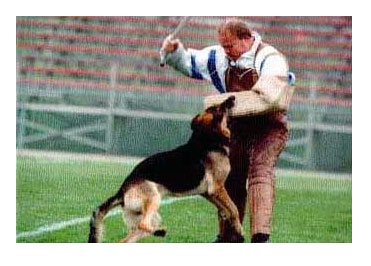
A dog with good nerves and good prey drive needs to be moved into defensive training at an earlier age than a defensive dog. We run the risk of creating a problem with these strong nerved dogs by allowing them to become so comfortable working in prey that they have to physically hurt to flip them into defense. Whereas if that same dog had been taken into strange environments (once its prey had been set) when it was a little younger and worked in light defense, this problem would not have developed.
The point here is that there is no type of dog that needs to be started in defense.
There are a group of people on the protection dog forum who have herding dogs (Border Collies, Great Pyrenees) that have recently claimed that because their dogs are so aggressive towards predators, they must have defense. After all, if a dog will protect the flock and kill a coyote, how can that dog not have defense?
Well, to be totally truthful, these animals do not have defense (not the defense we are talking about in protection training). These dogs kill predators in prey drive. To them, the predator is prey, just like how they see the sheep as prey. There is no difference. This is why these herding dogs will not do a defensive bark and hold in front of a helper. They lack defense.
Many people get very confused over this issue. They interpret a reaction of a dog to a certain thing that a helper does as defense. When in fact it is not defense, it is an accelerated form of prey. The use of a whip in training can often be seen as an example. The helper cracks the whip and this raises the intensity of drive. After a while, the whip itself becomes the stimulation to raise prey drive in the dog. To make the point, I have shown people how you can toss the whip to the side and the dog will leave the helper and move to the whip and either bark at it or try and get it. If the whip is used incorrectly in training, it becomes a prey item.
The point to this section is that to the uneducated person (or under educated trainer) it can be difficult to distinguish the difference between prey and defense, especially when the intensity of the prey work is elevated. We also have to remember that there is also an overlapping of drives that occurs. Prey guarding is an example. When a dog is standing over the top of the sleeve that had been slipped by the helper and guarding it from the helper who is trying to steal it back - the dog is working in both drives - with the primary drive being prey. Again, a difficult concept for a novice to fully understand.
Now, on the other end of the spectrum, we have these trainers that train their dogs in prey for so long that the dogs become locked in prey. This is also foolish. Dogs that become locked in prey always have sound temperament and good nerves. These dogs are so driven for their prey item that they are willing to tolerate strong doses of pressure or pain just to get their prey. They develop the attitude that "I can take anything you (the helper) can dish out as long as I get to bite my prey item in the end."
I saw a response to the defense statement on the protection dog forum by a national select French ring helper. He made the statement that the French ring trainers start to train in play (prey drive) from a very early age. His dog was 14 months old and working at the second level of Ring.
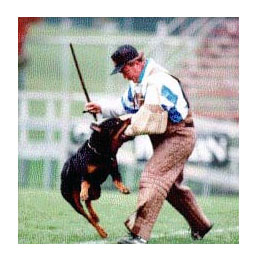
The French Ring is an interesting sport. See my video for training techniques of the French Ring sport. At one point, the dogs are sent after the helper from a long distance away. The handler is required to call the dog off of the attack (and back to him) when the dog is within 1 meter of the decoy. In the biting portion of the French Ring, the dogs are hit with a split bamboo stick (called a clatter stick) 80 to 100 times within a minute. These hits are not painful, they are noisy. They are designed to be psychologically threatening to the dog.
People that train their dogs for the French Ring Sport are a group of people who want (and need) to get their dogs locked in prey. For this sport, being locked in prey is a desirable situation and there is nothing wrong with it.
Dogs cannot work the French Ring in defense drive. If a dog has strong defense, he would never be able to be called off of a down field attack at 1 meter from the helper, and 99% of the strong defensive dogs would never come off of a fight in which it was being hit 80 times a minute with a stick.
So, again, the point is that the steps of training need to be based on the temperament of your dog and the goals you want to achieve with the dog.
If you want a guard dog to be in a fenced enclosure, you wait until the dog is mature and only do defensive training with the dog. But don't let this dog around the general public. It is not a safe animal to be around.
If you want a Schutzhund dog, you tailor a program in prey and defense based on the temperament and drives of each dog. With the goal being to produce a dog with sound temperament who works just like the other dogs in the sport. This training is started in prey with defense being added when the temperament of the dog requires it.
If you want a police service dog, you approach the initial training in the same way you start a sport dog: in prey. The difference is that a service dog is worked at a much higher level of fight drive when he reaches maturity.
My definition of fight drive is "a dog that is working with the forwardness of prey and the intensity of defense." Dogs working in fight drive look at the helper as a fighting partner. They are trained to achieve the mental attitude that they will beat the helper (or the suspect) no matter what the circumstance. See my video on Bark and Hold Training for Police Service Dogs.
They develop the mental attitude that they will overpower every helper (or every suspect) in every environment and under every circumstance. Service dogs need to be trained to a level where it does not matter if the helper is wearing a sleeve, suit, or if the the dog has a muzzle, etc. The dog looks at each of these circumstances in the same way. His goal in each case is to dominate the suspect or helper.
This is a mental attitude. It's not a trained skill. Some people think that training a service dog to bite a man without protective equipment on is a learned skill that is simply developed by using a muzzle or a hidden sleeve. They are wrong.
You don't get a dog to this level of training without setting a good foundation in prey drive. Trainers that say that they need to start a young dog in defense so the dog looks at protection training seriously do not understand fight drive training. The bottom line is that the place to start protection training is with prey drive. View my video on The First Steps of Bite Training for more in-depth instruction.




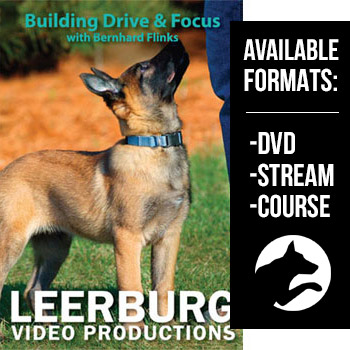
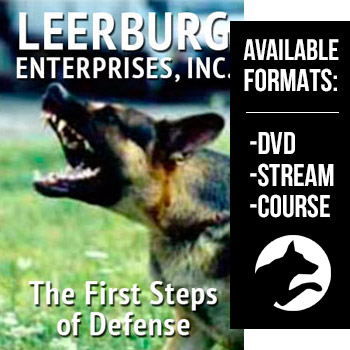
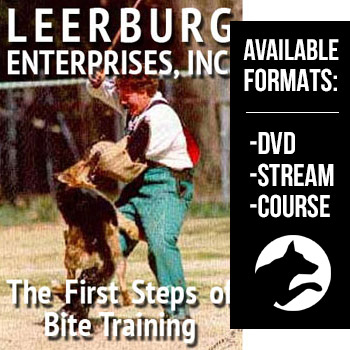



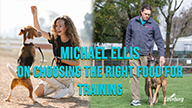
Ask Cindy.